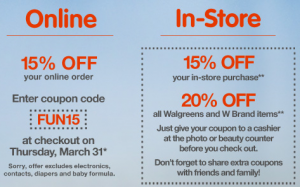
by admin | Aug 27, 2014 | Search Engine Optimization
Over the last several years, Google has updated their algorithm that determines how your website ranks on their search results pages. What we’ve learned through all of these updates is that Google is trying to provide the most relevant results to what you’re searching for. The definition of relevance, however, has evolved over time.
Relevance in Search Engines
Relevance used to mean that you had the most backlinks and popularity among other sites. Then people started using money to gain popularity, trying to beat the system. Google’s response: Google Panda Update.
Relevance used to mean that your site had a dense amount of specific keywords in it. Then people started hiding text and stuffing keywords wherever they could to trick Google into ranking them first. Google’s response: Google Penguin Update.
Well, today, Google has pretty much manhandled every trick in the book and the only way to have long-term success in search engine marketing is (more…)
by admin | Apr 17, 2014 | Random Postings, Website Analytics
Written by Erin Trowbridge, Marketing Director
I recently did a website statistics analysis for a client of ours and as I was writing the summary, I found myself using lingo, jargon, geek-speak…whatever you want to call it. I realized that I might have some explaining to do. So, I put together a quick “Lingo List” for your website analytics, to help more of our clients sort through and understand the information they see in Google Analytics.
Visit = one sitting at a computer/device, viewing your site (you may see this also referred to as a Session)
Unique Visitor = one person who may have multiple visits to your site
Bounce = When a visitor gets to your site, doesn’t click on anything else, then leaves. (more…)
by admin | Sep 4, 2013 | Marketing Ideas, Random Postings, Social Media, Technology Ideas
Written by: Erin Trowbridge, Marketing Director
Tomorrow, I’ll be presenting at the Eau Claire Chamber’s Social Media & Marketing Conference at Florian Gardens, which JB Systems is also sponsoring, so I wanted to give our blog readers a sneak peek at what’s in store!
We have a lot of clients lately asking about how they can keep up with the mobile world, in relation to their websites. There are a few different routes to go that we discuss with our clients, including:
- A mobile app – This is a native software application that you download to your phone that performs functions or offers content to users. Many times, mobile apps have very specific functions (browse homes for sale, refill a prescription, check nearby gas prices, etc.). This type of mobile interaction is usually much different than the customer’s main website, so it requires a different set of information and requirements from the client. It also goes through a process to be approved and sold on an app store like iTunes, for example.
- A mobile website – This is a website that is independent of your main website. Mobile websites are usually hosted under a subdomain or different domain altogether (i.e. m.facebook.com or jbsystemsllc.mobi). Mobile websites are a great alternative if you want the flexibility of the web but want to offer users different content than what they would see on your full site. Many times, you’ll see something like ‘View our Full Site’ on a mobile site. The goal is to offer users quick, relevant information for mobile users, instead of inundating them with the full breadth of your full site content.
- A responsive website – This is the same as your website – only different. (What?!) Responsive design is a newer trend in web design that rearranges the elements of your layout to fit a wide variety of screen sizes, instead of just shrinking them, thus eliminating the need to pinch-and-zoom all the time. The result of responsive design is easier access to all/most of the content on your site, one set of web files to manage and maintain, better SEO, and lower cost in most cases.
I’ll be discussing these topics and other mobile trends, tools, and tactics in my presentation, as well as pros and cons of implementing these strategies. Look for a follow up blog post with more info from the presentation!
by admin | May 16, 2011 | Marketing Ideas, Random Postings
Still trying to figure out how to tell if the ads you’re placing in the newspaper or magazines are actually working? Enter: The Promo Code.

A Promo Code, as used by Walgreens
You’ve all probably seen them – codes that may look something like “JUNE2011″ or “SPG56″ or “COUPON11″. These are lovingly referred to in the e-commerce world as “Promo Codes” and they can be extremely powerful, if utilized to their full potential. Some of our clients use promo codes in their online stores promoting sales, offering exclusive discounts to their Facebook followers, or as a customer service ‘thank you’. Promo codes also work great for tracking offline marketing efforts like direct mail or trade show leads.
Promo codes are really not a new concept in the marketing world – traditional marketers have used these for eons, except they have been in the form of coupons. Now with the explosion of e-commerce, the promo code is making redeeming those coupons even easier – and simple is definitely a key element in the online world.
If you’re a retailer who is already using coupons, and you’re thinking about e-commerce, you’ll probably love using online promo codes in your store. Through our e-commerce system, you can easily create your own codes, name them whatever you’d like, and attribute them to either a dollar amount or percentage off. (We’ve even gone so far as to do some crazy buy 1, get 1 kind of stuff – but that’s a little more involved.) Then, all you have to do is promote the heck out of your promo codes – email them to your customers, post them on Facebook, add them to the back of your business cards – make them all different and track which ones bring in the most sales. What?! Tracking your marketing?! That’s why we love the web!
Give us a call if you want to chat e-commerce or promo codes – or even if you just want to come up with some new ways to use your website as a marketing machine.
by admin | Jan 19, 2011 | Random Postings, Website Launches
Boy have we been busy! Since May 2010, we have launched over 15 new websites! All of these, along with our previous work, can be seen by visiting Our Work!!!
From all of us at JB Systems, we hope you enjoy browsing our work!
by admin | Sep 23, 2010 | Random Postings, Social Media
Inspired by Seth Godin’s Meatball Sundae (check it out here – the YouTube video is entertaining)
Because consumers (or buyers for business services) have so many choices, and can decide more freely how to receive marketing messages these days, they don’t have to settle for what marketers are telling them anymore. They can now listen to their friends, and their friends’ friends, or seek out other independent third-party credible sources about where to shop, eat, get their car fixed, etc.
That said, your social media strategy is only as good as the website you’re directing your friends, fans, and followers to. If the two aren’t consistent, and aren’t geared at turning those friends, fans, and followers into customers and raving fans, then how can we expect social media to work?
So, take a look at your own website. Is it ready for the social media world? Ask yourself these questions. What changes can you make?
* Is your website social? Does it allow people to share information with you and about you easily?
* Does it focus on things that people are really interested in or does it just focus on you?
* Does it let them interact with you, and with others?
* Are you listening and responding to them?
* Does it allow them to share their own content that’s relevant to your products/services?
I’ll be talking about this and more at a social media conference coming up next Wednesday, September 29th for the Eau Claire Chamber of Commerce. To register, go to their website. For website questions, contact me at JB Systems and I’d be happy to help!


